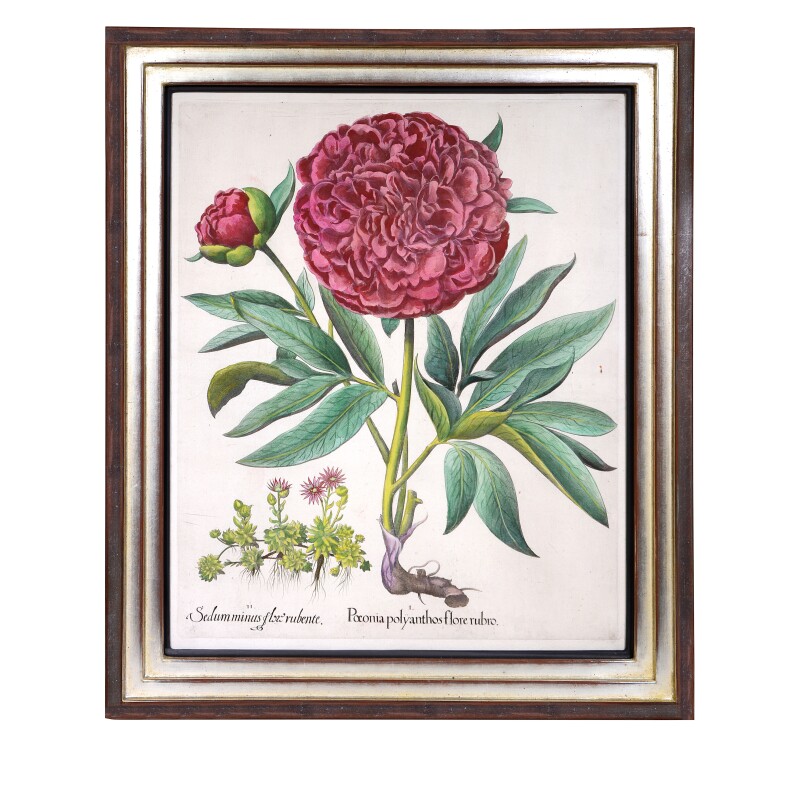




Basilius Besler
German Hand-Colored Peony Engravings
Mid 17th Century
Complimentary shipping
Price:
International shipping available
Customs duties and taxes may apply.
Ships from: London, United Kingdom
Taxes not included
VAT and other taxes are not reflected in the listed pricing. Read more
Authenticity guaranteed
We guarantee the authenticity of this item.
Details
Description
Hand-finished copper engravings from Hortus Eystettensis, one of the earliest and most famous works in the field.
- Sold as a set of 4.
- Copper engraved plates enhanced by hand with color.
- Basilius Besler (German, 1561–1629) was a respected Nuremberg apothecary and botanist, best known for his monumental Hortus Eystettensis.
- Framed and glazed.
- Published by Nuremberg and Eichstatt.
The Hortus Eystettensis is a pictorial record of the flowers grown in the greatest German garden of its time, that of Prince Bishop of Eichstatt, Johann Conrad von Gemmingen. The garden was begun by Joachim Camerarius in 1596 and, after his death in 1598, completed by Basilius Besler. A visitor, Philipp Hainhofer, in 1611 marveled at the eight gardens, each containing "flowers from a different country; they varied in the beds and flowers, especially in the beautiful roses, lilies, tulips." The Hortus records this variety and beauty. The book is exceptional in every sense; in its variety and range of flowers, in its size, in its fine quality of engraving. It is also one of the earliest records of flowers from a specific, documented garden. Besler was asked to complete the work by Gemmingen in 1606; the huge nature of the task was clear to Besler and he enlisted the help of his younger brother Hieronymus and Ludwig Jungermann, a nephew of Camerarius. Printing the Hortus may have begun as early as 1607. Drawings were made in situ and from specimens sent by the Bishop to Nuremberg; the Bishop reported to Hainhofer that he had boxes of fresh flowers sent every week to Besler at Nuremberg for sketching. A team of at least 10 engravers were employed to translate the drawings to copper plates. The gardens, along with most of the town of Eichstatt, were destroyed by the invading Swedish troops under Herzog Bernhard von Weimar in 1633–4, although they were partially restored by later bishops. Many of the original drawings survive in the University Library, Erlangen.
Literature
Nissen 158; Pritzel 745; Hunt 430; Blunt, pp 95-97; Stafleu & Cowan 497
Condition Report
Not examined out of frame.
Wear consistent with age and use.
Dimensions
Materials
Period
Decorative Style
Country of Origin
Conditions of Business
Please note that the cancellation right for EU/UK purchasers applies to this item. Please read Condition 19 of the Buy Now Marketplace Conditions of Business for buyers for more information. Read more here.